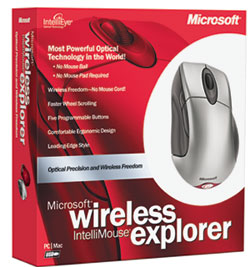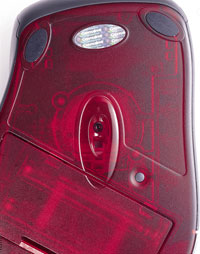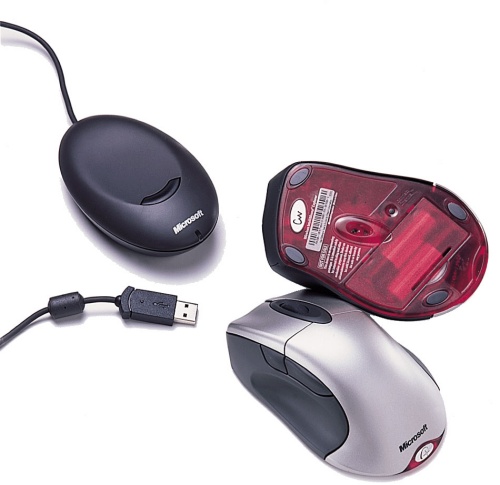
 |

|
| ActiveWin: Reviews | Active Network | New Reviews | Old Reviews | Interviews |Mailing List | Forums |
|
|
|
|
|
DirectX |
|
ActiveMac |
|
Downloads |
|
Forums |
|
Interviews |
|
News |
|
MS Games & Hardware |
|
Reviews |
|
Support Center |
|
Windows 2000 |
|
Windows Me |
|
Windows Server 2003 |
|
Windows Vista |
|
Windows XP |
|
|
|
|
|
|
|
News Centers |
|
Windows/Microsoft |
|
DVD |
|
Apple/Mac |
|
Xbox |
|
News Search |
|
|
|
|
|
|
|
ActiveXBox |
|
Xbox News |
|
Box Shots |
|
Inside The Xbox |
|
Released Titles |
|
Announced Titles |
|
Screenshots/Videos |
|
History Of The Xbox |
|
Links |
|
Forum |
|
FAQ |
|
|
|
|
|
|
|
Windows XP |
|
Introduction |
|
System Requirements |
|
Home Features |
|
Pro Features |
|
Upgrade Checklists |
|
History |
|
FAQ |
|
Links |
|
TopTechTips |
|
|
|
|
|
|
|
FAQ's |
|
Windows Vista |
|
Windows 98/98 SE |
|
Windows 2000 |
|
Windows Me |
|
Windows Server 2002 |
|
Windows "Whistler" XP |
|
Windows CE |
|
Internet Explorer 6 |
|
Internet Explorer 5 |
|
Xbox |
|
Xbox 360 |
|
DirectX |
|
DVD's |
|
|
|
|
|
|
|
TopTechTips |
|
Registry Tips |
|
Windows 95/98 |
|
Windows 2000 |
|
Internet Explorer 5 |
|
Program Tips |
|
Easter Eggs |
|
Hardware |
|
DVD |
|
|
|
|
|
|
|
ActiveDVD |
|
DVD News |
|
DVD Forum |
|
Glossary |
|
Tips |
|
Articles |
|
Reviews |
|
News Archive |
|
Links |
|
Drivers |
|
|
|
|
|
|
|
Latest Reviews |
|
Xbox/Games |
|
Fallout 3 |
|
|
|
Applications |
|
Windows Server 2008 R2 |
|
Windows 7 |
|
|
|
Hardware |
|
iPod Touch 32GB |
|
|
|
|
|
|
|
Latest Interviews |
|
Steve Ballmer |
|
Jim Allchin |
|
|
|
|
|
|
|
Site News/Info |
|
About This Site |
|
Affiliates |
|
Contact Us |
|
Default Home Page |
|
Link To Us |
|
Links |
|
News Archive |
|
Site Search |
|
Awards |
|
|
|
|
|
|
|
Credits |

|
Product: WireLess IntelliMouse Explorer Company: Microsoft Website: http://www.microsoft.com Estimated Street Price: $74.95 Review By: Julien Jay |
Microsoft IntelliEye Technology
|
Table Of Contents |
 Microsoft
IntelliEye technology employs a tiny chip with a sensor and digital signal
processor (DSP). The sensor's glowing red light captures "snapshots" of the
surface you move the mouse on, at the exceptional rate of 6,000 images per
second. To capture movements your mouse uses a laser LED that emits lighting
impulsions at a specific frequency while the optical sensor picks and
interpret them up so the DSP can translate changes between the images into
on-screen pointer movements. While classic Logitech optical mice are stuck
with a capturing rate of 1500dpi, the new Microsoft IntelliEye technology
will clearly provide users with the smoothest, most precise and fastest
tracking speed to date. The revamped Microsoft IntelliEye technology used
by the Wireless IntelliMouse Explorer is now 300% faster than before to
achieve and unprecedented accuracy.
Microsoft
IntelliEye technology employs a tiny chip with a sensor and digital signal
processor (DSP). The sensor's glowing red light captures "snapshots" of the
surface you move the mouse on, at the exceptional rate of 6,000 images per
second. To capture movements your mouse uses a laser LED that emits lighting
impulsions at a specific frequency while the optical sensor picks and
interpret them up so the DSP can translate changes between the images into
on-screen pointer movements. While classic Logitech optical mice are stuck
with a capturing rate of 1500dpi, the new Microsoft IntelliEye technology
will clearly provide users with the smoothest, most precise and fastest
tracking speed to date. The revamped Microsoft IntelliEye technology used
by the Wireless IntelliMouse Explorer is now 300% faster than before to
achieve and unprecedented accuracy.

Microsoft
Wireless IntelliMouse Explorer Sensor (click to enlarge)
Features and Functions with IntelliEye Optical Tracking Technology
- Increased precision and better control: Moving parts can break or wear out with use. IntelliEye replaces the moving parts inside the mouse with a tiny optical sensor, creating a smooth, flat underside to the mouse. The completely digital design of Microsoft IntelliEye means the mouse will remain as responsive and accurate as it was the day it was purchased.
- No more cleaning: Traditional mice feature moving parts that are susceptible to the accumulation of dirt, dust or grime, which cause pointers to stick or move erratically. With IntelliEye technology, there is no mouse ball to clean and no parts to break.
- No need for a mouse pad: The optical sensor in IntelliEye works on virtually every surface (see usability), thus eliminating the need for a mouse pad.
Benefits of the new IntelliEye technology
Improved
tracking speed: The
most common complaint optical mouse users have is that the cursor gets
“lost” during periods of quick hand movement. The problem is, most optical
mouse products can only move up to 14 inches per second. But usability
research indicates that computer users can move the mouse up to 30 inches
per second - far faster than the tracking capability of today’s mouse
products. Microsoft’s IntelliEye optical technology is better. It enables
the mouse to keep up with the hand, tracking up to 37 inches per second.
Increased accuracy: Due
to the limits of existing optical mouse technology, the cursor does not
always land where you want it. This causes reduced accuracy and increased
frustration. IntelliEye optical technology provides superior accuracy and
enables the cursor to land where you want it.
Installation
Installing the Wireless IntelliMouse Explorer, is relatively easy. You just have to unplug your old mouse, position the small receiver unit somewhere on your desktop before plugging it to the USB port. The mouse shouldn’t exceed the distance of 1,8 meters or 6 feet between the radio receiver (including obstacles). The WIME (the sweet name of the Wireless IntelliMouse Explorer) doesn’t use the PS2 port anymore because the bandwidth offered by the PS2 port isn’t sufficient for the flow of data provided by the 6000dpi sensor. Now you have to insert two AA sized 1.5volts batteries into the mouse and you’re ready to start your computer! The new mouse will be instantly recognized and the final operation left to perform is to install the IntelliPoint 4.01 set of drivers to unleash the full potential of this awesome mouse.

Microsoft
Wireless IntelliMouse Explorer (click to enlarge)
